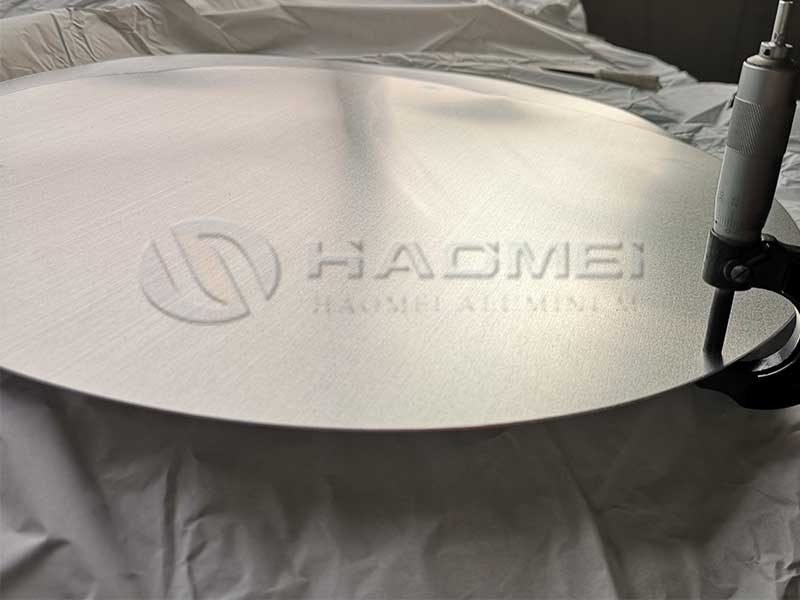1050 1100 1060 aluminium circles for cookware
When it comes to cookware, the choice of material is paramount. Among the array of options available, aluminum circles made from the 1050, 1100, and 1060 alloys have carved out a special niche, combining practical benefits with remarkable versatility. Each alloy possesses distinct properties that cater specifically to various cooking needs, elevating cookware design and performance.
Unveiling the Alloys
At first glance, 1050, 1100, and 1060 aluminum may seem similar, but the nuances in their composition yield diverse benefits.
Working with 1050, 1100, and 1060 aluminum circles for cookware presents a fascinating blend of material science and manufacturing realities. We see firsthand the subtle differences these alloys bring to the final product. 1050, with its superior workability, is a favorite for intricate designs and deep-drawn pieces, though its softness can sometimes necessitate additional reinforcement. 1100 offers a similar level of formability but with marginally improved strength, making it a good compromise for pieces requiring both intricate shapes and reasonable durability. 1060, with its slightly higher strength and slightly lower formability compared to the others, often finds its way into larger diameter cookware where structural integrity is paramount. The consistency of our raw material is – even minor variations in alloy composition or temper can impact the forming process, leading to defects or inconsistent finishes.
The biggest challenge isn't the alloys themselves, but balancing the needs of our customers with the realities of production. A customer might request a specific thickness for superior heat conductivity, but that thinner gauge can be trickier to form without wrinkling or tearing. We constantly work to optimize our processes – adjusting the forming pressures, lubrication, and annealing cycles – to meet demanding specifications. The beauty of these alloys is their versatility, allowing for both elegant designs and robust construction. Yet, achieving that balance consistently requires a deep of the material's properties, the nuances of
-
1050 Aluminum Circle: Renowned for its excellent thermal conductivity, the 1050 aluminum circle is primarily known for its pure aluminum content of at least 99.5%. This purity allows for uniform heat distribution, making it ideal for frying pans and sauté pans where even cooking is critical. Additionally, this alloy offers superior joinability and forming characteristics, making it easier to manufacture complex designs or shapes without compromising performance.
-
1100 Aluminum Circle: While also a pure aluminum alloy with a composition of 99.0%, the 1100 circle boasts increased strength and exceptional corrosion resistance compared to its 1050 counterpart. This makes it ideal for applications where durability is needed, such as in pressure cookers or deep pots that must withstand high temperatures and a variety of cooking environments. Additionally, 1100 circles maintain their integrity and appearance over time, ensuring long-lasting cookware.
-
1060 Aluminum Circle: With a slightly higher purity (99.6% minimum), 1060 is characterized as an excellent option for industrial cookware. This alloy is celebrated for its combination of good formability and enhanced corrosion resistance, making it a top choice for deep-drawn cookware that requires intricate shaping. Given its performance in both low and high-temperature settings, 1060 aluminum circles are perfect for items like pots and frying pans, which frequently undergo temperature fluctuations.
Distinctive Features
-
Thermal Conductivity: All three alloys excel in conducting heat, minimizing hot spots and allowing for precise temperature control. The quicker cooking responds directly to energy efficiency, which aligns with the growing emphasis on eco-friendly kitchen practices.
-
Durability and Resistance: The subtle differences in alloying particularly play into the strength and resilience required for heavy-duty cookware. Users can rely on 1100 circles for a more robust construction in products that encounter significant wear and tear during light and high-temperature uses.
-
Surface Finishing & Aesthetic Appeal: The 1050 and 1060 options have a naturally appealing finish, which is a bonus for consumers who seek both purpose and aesthetics in their cookware. Added coatings also work well on these circles, lending themselves beautifully to non-stick finishes or anodization for improved surface strength.
Culinary Applications
Aluminum circles find their way into a seeming infinite array of cookware types. their unique properties leads manufacturers and consumers alike to make informed choices:
- Frying Pans: 1050 circles are frequently used for quick-heating frying pans that facilitate immediate cooking outcomes while preserving the taste of ingredients.
- Saucepans and Stockpots: 1100’s durability is a leading factor in its use for saucepans and stockpots, providing reliable cooking performance and longevity in various culinary applications from sauces to soups.
- Cookware Sets: Consider the combination of these lives alloys in cookware sets—utilizing a mix of 1050 for everyday simple tasks and 1100 for heavier duties. This multi-faceted use resonates well with the culinary community’s needs for flexibility.
Final Thoughts
In conclusion, the thoughtful selection of 1050, 1100, and 1060 aluminum circles for cookware is a game-changer. Not only do these alloys enhance performance through excellent thermal properties and strength, but they also provide a reliable foundation that caters to the burgeoning needs of modern cooking—inviting culinary creativity while ensuring safety and efficacy. For both established chefs and home-cooking enthusiasts, investing in cookware fashioned from these exceptional aluminum circles may very well lead to a more enjoyable and rewarding culinary journey.
https://www.al-alloy.com/a/1050-1100-1060-aluminium-circles-for-cookware.html


